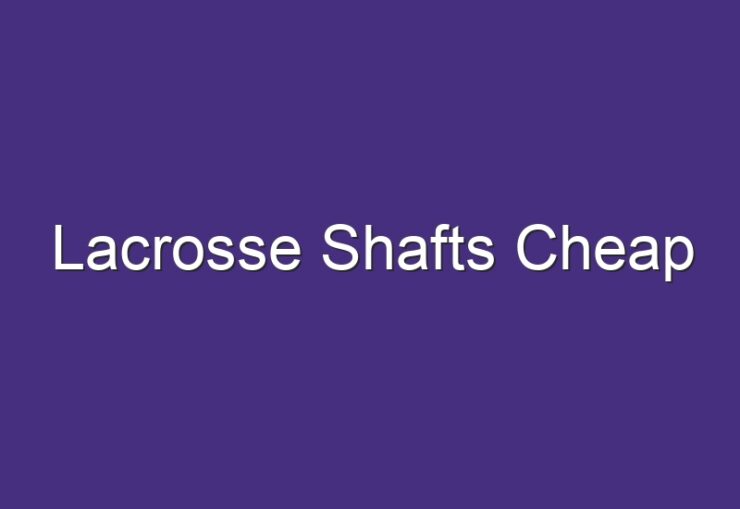Baseball’s first work stoppage has come since the controversial 1994-1995 strike, a nasty breakdown that led to the cancellation of the 1994 World Series and a 144-game schedule in 1995.
The Collective Bargaining Agreement agreed to by the owners of MLB and the MLB Players Association in 2016 expired on Wednesday night at 11:59 p.m. ET and Commissioner Rob Manfred and his owners shortly afterwards blocked the players. Both the failure to reach an agreement and the lockout were anticipated developments; It has been known for a long time that the parties were widely separated on the multiple issues on the table.
MORE: MLB Lockdown Explained – Everything You Need To Know
Here’s another development that won’t be surprising, if history is any guide: Players will bear most of the anger, criticism, and hostility from baseball fans angered by the stoppage. Players will not win the PR battle.
“I know from my own experience,” Hall of Fame pitcher Tom Glavine told The Sporting News during the World Series, “after going through a couple of work stoppages and being in the players’ union and being a guy who’s been vilified, people will make him say all the time, ‘These greedy gamers! If I had the chance, I’d play for free. It’s child’s play!’ “
Glavine, who often spoke publicly in support of the MLBPA’s position during the 1994-1995 strike, was so vilified by baseball fans that he was roundly booed in his own stadium when the strike ended, even though he had been a figure established and successful in Atlanta in baseball history, pitching eight years for the Braves and finishing first, second and third in the National League Cy Young voting the previous three full seasons.
And yet the boos started when he stepped into the bullpen to warm up on April 27, 1995. He wasn’t alone. Pirates shortstop Jay Bell, another active player in the MLBPA, was booed at home on Opening Day. White Sox outfielder Mike Devereaux had a beer thrown over his head in the outfield at home. The fans weren’t happy with the owners either, of course, but the players were the main targets of the ire.
But, and maybe this is a simple question: Why?
A question of motivation
Why does the default position of so many fans seem to blame “greedy” players more than owners? What is the reasoning behind that? To help understand the responses, TSN asked Susan K. Whitbourne, a professor of psychology at the University of Massachusetts Amherst who has studied and written on the psychology of sports fans.
Answers begin with grieving concepts: intrinsic motivation versus extrinsic motivation.
“Intrinsic motivation,” Whitbourne said, “is what we give the player when we think, ‘They’re doing it because they love the game.’ And the extrinsic thing is: ‘They do it because they pay them’. When you start to focus on people getting paid for something they love, putting a dollar sign on it just changes it. “
Of course, fans know that most players receive large sums of money. But when you’re watching a baseball game, that’s easy to put aside while enjoying a sport you played as a kid. You are just watching an athletic competition, simple and pure. When the games stop, or, in this case, when the Hot Stove offseason stops, that illusion goes away.
“It’s a dose of reality that most people would rather not deal with,” Whitbourne said.
It is a dose that changes perspective.
“It’s called motivational displacement,” Whitbourne said. “When you do something because you love it, like a kid who plays sports because he loves it, and then you start getting rewarded for something you loved to do, it starts to take on a more commercial aspect. It’s called Motivational Crowding Out because the extrinsic displaces the intrinsic, which was there to begin with. “
This work stoppage will not be as severe as the 1994-1995 strike. At the time, the owners insisted on implementing a salary cap and the players refused. Neither side moved for months and months, and baseball fans watched that strike for 232 days. There is no singular problem like that this time.
MORE: A History of MLB Work Stoppages
But there are problems, and most of the changes that are driven come from the players.
“Players have seen their financial position deteriorate in recent cycles, and in recent years in particular, when the average salary of players has decreased, which is unprecedented for MLB,” he said. Nathaniel Grow, associate professor of business law and ethics at Indiana University Kelley School of Business, who has written extensively on baseball-related issues and issues for several years. “Within that group is time-of-service manipulation, which helps fuel some of these salary problems.”
“The players don’t think they are getting a fair deal, it’s a fair general consensus. The question is, where do they go and how do they try to improve their financial position? ”.
These collective bargaining negotiations are the time to fight for change. Two of the players on the MLBPA’s eight-player executive subcommittee, Max Scherzer and Marcus Semien, were free agents and signed huge contracts in the days leading up to the deadline. Scherzer, at age 37, signed a three-year contract with an average annual value of $ 43.3 million per season to play for the Mets. Semien, at age 31, signed a seven-year, $ 175 million contract with the Rangers.
So yeah, more than one person has asked, “How can Max Scherzer want to shut down the sport when he just signed a $ 43 million a year deal?”
It is not that simple, of course.
“There are divergent interests within that broader membership,” Grow said. “Yes, there are players who would be better off if they raised minimum wages and shortened refereeing time and all that, and we sacrifice something so that the Mike Trouts and Gerrit Coles don’t make that much money. But that has never been the union’s modus operandi. The union has always been ‘a rising tide lifts all the boats’, it focuses on free agency and the best players get paid, and that will trickle down through the arbitration process through comparable salaries and all that. “
Uneven familiarity
But the question gets to a bigger issue: Players like Scherzer are known quantities. They are the faces of baseball, the ones with the HD cameras focused on their every move, the ones that are written in the newspapers and on the web. They are the ones that fans follow on social media accounts, the ones that fans feel they know about.
Fans are drawn to the world of gamers.
But the owners, well, besides the new Mets top boss?
“In a way, the owners are owners. They are running a business so they are considered to be doing their job, “said Whitbourne. “I’m sure there are some people who take it out on the owners, but most people identify with the players, see the players, feel that they are the players, feel that the players are doing it for the love of the game. , and when that underbelly shows that they’re doing it for the money, yeah, you feel like, ‘Why did I put my faith in this person?’ You expect it from an owner, but not from a player. “
And that familiarity isn’t just about Instagram accounts or watching games on the MLB app or on TV. Here’s another important element of the equation: everyone knows exactly how much the players win. Cot’s Baseball Contracts is a must-have site for baseball fans and writers; you can instantly find out how much any baseball player is earning and how much he has earned each year of his career. Does your contract have an opt-out option? Club options? Rights acquisition options? Performance bonuses?
Everything is there. Owners? Not that much.
“It is much more difficult to look at an owner and look at his books, to trust that the books are accurate and to be able to assess what the owner is actually doing. Again, in my day, that was a big point of contention and a big part of the animosity: there was no trust between the players and the owners, “said Glavine. “There was no confidence in what his books said. In fact, they wouldn’t show us their books. Some owners told us privately, “With a good accountant, you can make a $ 4 million profit look like a million dollar loss overnight.” It’s hard to really trust what they tell you. But with the players, there is no guesswork. You Google Tom Glavine’s salary and there it is, right there. There is nothing hidden, nothing left to guess. It is what it is.”
That difference matters.
“It all comes back to the veil of relative mystery that an owner enjoys, and the players are out there, exposed,” Whitbourne said. “We immediately identify with them. It is remembered that ‘They do not do it because they love me, but because they are paid’. You will turn them on. Logically, they may know that they are doing the right thing for themselves, but it is difficult to turn off that side of emotional identification. “
MORE: MLB Free Agent Tracker: Latest Rumors, Deals
So another question arises: with everything we’ve talked about, is it possible that gamers could turn fans on their side in a labor dispute? Glavine once thought so.
“Looking back on my experience, if there was a mistake I made, it was that one. I never turned down an interview, for the most part, and I know that was part of the reason people hated me so much, because they saw me a lot, “he said. “I was naive. I felt like, ‘Okay, every interview I do is an opportunity’ and I was going to make someone see what we were doing and I was going to change someone’s opinion. And that just wasn’t going to happen, you know? People were on our side or on the side of the owners. I don’t think many people have changed their minds, and that was a mistake that I personally made, thinking that I could. “
The pause.
“I guess my answer to your question is that I don’t know,” he said. “I don’t know how you are going to try to win that battle, or if you can do it.”
Perhaps it is not worth expending energy to win that battle.
Last year, an article on FiveThirtyEight.com looked at broadcast and attendance figures before and after a strike. Attendance fell slightly just after the two-week strike during the 1972 season, but increased again the following year. In 1981, when the strike split the season into two messy halves, attendance during the season declined that year, but rose again, above 1980 levels, in 1982.
None of those stoppages compared to 1994-1995. Attendance dropped dramatically and it took years to return to pre-strike levels. But interest? That stayed high, as the 1995 World Series shows; 4 million more people watched that series than the 1993 World Series.
“Over time, the fan base more or less comes back to them,” Whitbourne said, “but it’s a painful period.”
Oh, and Atlanta fans welcomed Glavine back to their well wishes. It probably didn’t hurt that, in his last start in 1995, he pitched eight scoreless innings in Game 6 of the World Series, helping the Braves clinch their first championship in Atlanta.
@thesportingnews’ It is the season for the lockout of @mlb ⚾️🎄 # December #lockout #mlb #christmas #baseball ♬ original sound – The Sporting News



